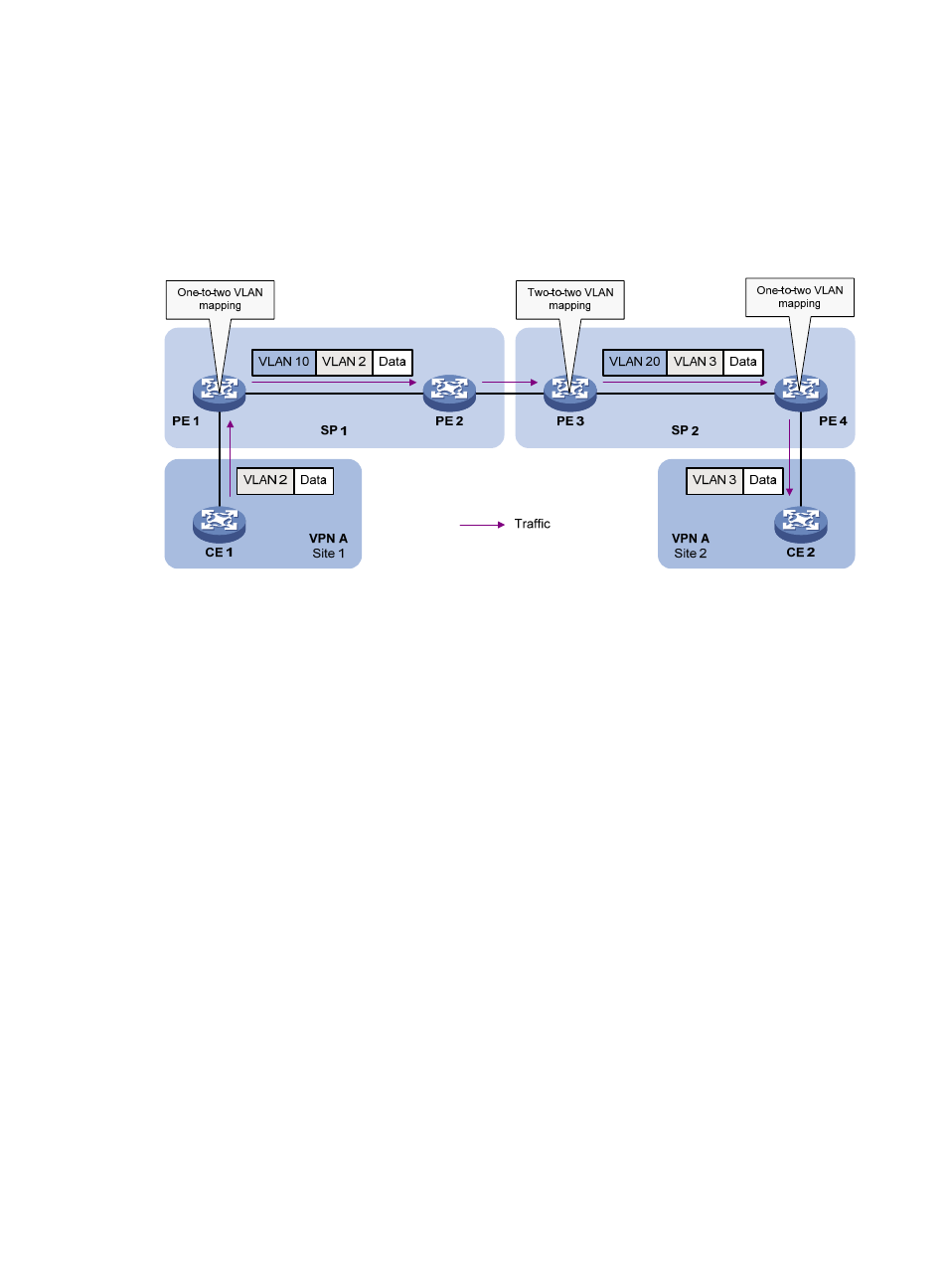Vlan mapping implementations – H3C Technologies H3C S5560 Series Switches User Manual
Page 248

214
Application scenario of one-to-two and two-to-two VLAN
mapping
shows a typical application scenario of one-to-two and two-to-two VLAN mapping. In this
scenario, the remote sites of the same VPN must communicate across two SP networks.
Figure 63 Application scenario of one-to-two and two-to-two VLAN mapping
Site 1 and Site 2 are in VLAN 2 and VLAN 3, respectively. The SP 1 network assigns SVLAN 10 to Site
1. The SP 2 network assigns SVLAN 20 to Site 2. When the packet from Site 1 arrives at PE 1, PE 1 tags
the packet with SVLAN 10 by using one-to-two VLAN mapping.
When the double-tagged packet from the SP 1 network arrives at the SP 2 network interface, PE 3
processes the packet as follows:
•
Replaces SVLAN tag 10 with SVLAN tag 20.
•
Replaces CVLAN tag 2 with CVLAN tag 3.
One-to-two VLAN mapping provides the following benefits:
•
Enables a customer network to plan its CVLAN assignment without conflicting with SVLANs.
•
Adds a VLAN tag to a tagged packet and expands the number of available VLANs to 4094 ×
4094.
•
Reduces the stress on the SVLAN resources, which were 4094 VLANs in the SP network before the
mapping process was initiated.
VLAN mapping implementations
shows a simplified network that illustrates basic VLAN mapping terms.
Basic VLAN mapping terms include the following:
•
Uplink traffic—Traffic transmitted from the customer network to the service provider network.
•
Downlink traffic—Traffic transmitted from the service provider network to the customer network.
•
Network-side port—A port connected to or closer to the service provider network.
•
Customer-side port—A port connected to or closer to the customer network.
- H3C S5130 Series Switches H3C S5120 Series Switches H3C SR8800 H3C SR6600-X H3C SR6600 H3C MSR 5600 H3C MSR 50 H3C MSR 3600 H3C MSR 30 H3C MSR 2600 H3C MSR 20-2X[40] H3C MSR 20-1X H3C MSR 930 H3C MSR 900 H3C WX6000 Series Access Controllers H3C WX5000 Series Access Controllers H3C WX3000 Series Unified Switches H3C LSWM1WCM10 Access Controller Module H3C LSWM1WCM20 Access Controller Module H3C LSQM1WCMB0 Access Controller Module H3C LSRM1WCM2A1 Access Controller Module H3C LSBM1WCM2A0 Access Controller Module
